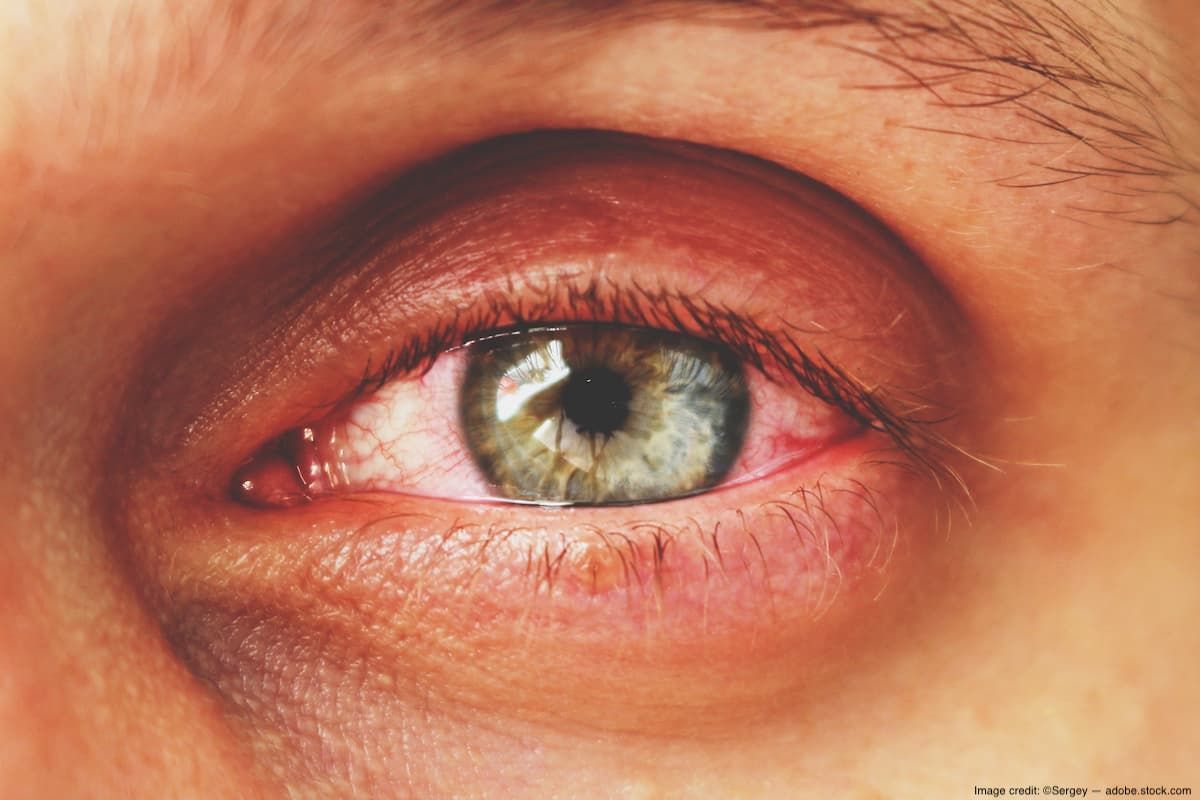Considering small case series of acute intraocular inflammation post-faricimab injections
Observing potential cases highlights the importance of monitoring and reporting, contributing to a comprehensive understanding of therapeutic effects.
(Image credit: AdobeStock/Sergey)

Physicians from the Department of Ophthalmology, Johns Hopkins University School of Medicine, Baltimore, reported 3 cases of acute, severe intraocular inflammation (IOI) “within 1 month at 3 locations within 1 institution” that developed after intravitreal injection of faricimab (Vabysmo; Genentech) to treat neovascular age-related macular degeneration (nAMD),1 according to lead author Loka Thangamathesvaran, MD.
The authors mentioned recent updates2 posted in November 2023 to the Warnings and Precautions and Adverse Reactions—Postmarketing Experience sections of faricimab’s US Prescribing Information that implied that “spontaneous post-marketing reports of retinal vasculitis with or without occlusion in patients treated with VABYSMO”2 were relatively rare, ie, with 1.5 million vials administered globally, the estimated reporting rate of retinal vasculitis with occlusion is 0.06/10,000 injections (for retinal vasculitis with or without occlusion: 0.17/10,000 injections).”2
However, a close look at their own data identified the aforementioned 3 cases during the same month at 3 locations in 1 institution under discussion in their case series.
“These events seemed unlikely to be coincidental,...We are unaware of similar events in the peer-reviewed medical literature with faricimab at this time. While it is possible this cluster was due to some unknown handling or storage problem, these events are brought to the attention of other ophthalmologists using faricimab in case such occurrences are more frequent than previous publications of clinical trials have suggested,” they emphasized.
Case evaluations
The authors conducted this case series to delve into the 3 initially culture-negative cases of acute, severe, posterior-segment IOI after intravitreal injections of faricimab that occurred between September 20 and October 20, 2023. The main outcomes were the visual acuity (VA), vitreous taps for bacterial or fungal cultures, and retinal imaging.
The patients had been treated with faricimab, 6 mg (0.05 mL of 120 mg/mL solution) for nAMD and had been treated previously with aflibercept (Eylea, Regeneron Pharmaceuticals); 1 of the patients also had been treated with bevacizumab (Avastin, Roche).
Case observations
The doses administered were from 2 different lots (expiration dates, July 2025) among 3 of 19 retina physicians at the 3 locations. The pre-injection corrected VAs were 20/63 in the left eye of patient 1, 20/40 in the right eye of patient 2, and 20/20 in the right eye of patient 3.
The cases of acute, severe inflammation affected the anterior and posterior segments within 3 to 4 days after the injections. The respective VAs after the injections were hand motions in the left eye, counting fingers in the right eye, and hand motions in the left eye.
Two patients were continuing faricimab treatment and 1 patient had received a first faricimab injection. All 3 patients were treated with intravitreal ceftazidime, 2.2 mg/0.1 mL, and vancomycin, 1 mg/0.1 mL, immediately following the vitreous taps, all of which were negative.
One patient underwent a vitrectomy 1 day after presentation; a vitreous culture performed intraoperatively grew 1 colony of Staphylococcus epidermidis, which disease specialists considered to be the likely contaminant. All symptoms resolved within 1 month; the corrected VAs were 20/100 in the left eye of patient 1, 20/50 in the right eye of patient 2, and 20/30 in the left eye of patient 3.
The authors concluded the IOI after faricimab injection “could represent some unknown storage or handling problem. However, this cluster suggests such inflammatory events may be more common than anticipated from faricimab trial reports, emphasizing the continued need for vigilance to detect and report such cases following regulatory approval.”
References
Thangamathesvaran L, Kong J, Bressler SB, et al.Severe intraocular inflammation following intravitreal faricimab. JAMA Ophthalmol. Published online February 29, 2024; doi:10.1001/jamaophthalmol.2024.0530
Patterson T. Subject: VABYSMO (faricimab-svoa), new warnings and precautions: retinal vasculitis and/or retinal vascular occlusion. Accessed January 2, 2024. https://www.gene.com/download/pdf/Vabysmo_DHCP_Important_Drug_Warning_2023-11-03.pdf
